Create a professional CV now!
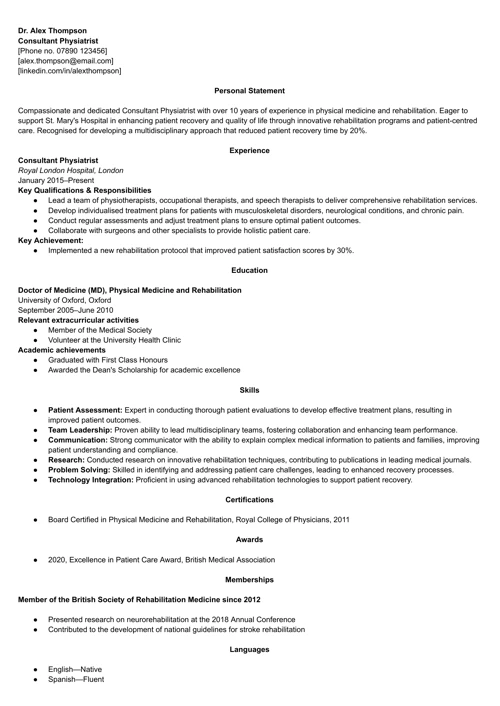 NO
NO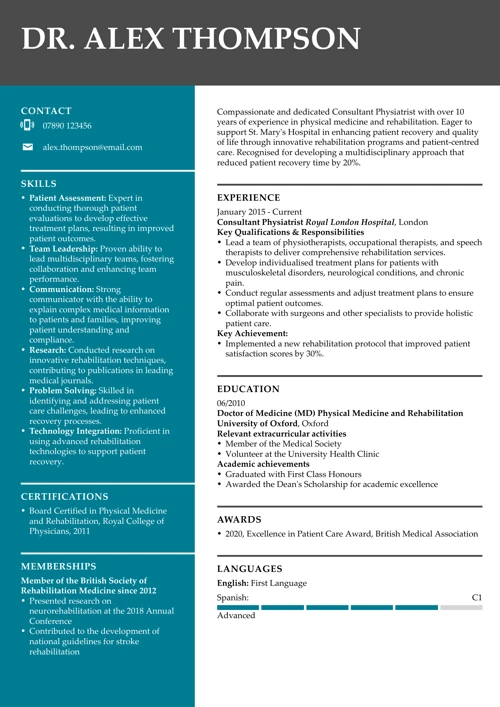 YES
YESOur customers were hired by:
A career in physiatry requires a unique blend of medical expertise, patient care, and rehabilitation skills. Crafting a compelling physiatrist CV is essential to showcase your qualifications—to captivate potential employers, highlight your clinical experience, research contributions, and patient management skills. In this article, you'll discover expert CV-writing tips and tailored examples to help you create an impactful physiatrist CV.
Create an effective CV in minutes. Choose a professional CV template and fill in every section of your CV in a flash using ready-made content and expert tips.
Create a professional CV now!
 NO
NO YES
YESWe created the sample on the right using our builder. See other good CV examples like this one.
Save a lot of time—just copy this physiatrist CV template and use our tips to adjust it to your needs:
Dr. Alex Thompson
Consultant Physiatrist
[Phone no. 07890 123456]
[alex.thompson@email.com]
[linkedin.com/in/alexthompson]
Personal Statement
Compassionate and dedicated Consultant Physiatrist with over 10 years of experience in physical medicine and rehabilitation. Eager to support St. Mary's Hospital in enhancing patient recovery and quality of life through innovative rehabilitation programs and patient-centred care. Recognised for developing a multidisciplinary approach that reduced patient recovery time by 20%.
Experience
Consultant Physiatrist
Royal London Hospital, London
January 2015–Present
Key Qualifications & Responsibilities
Key Achievement:
Education
Doctor of Medicine (MD), Physical Medicine and Rehabilitation
University of Oxford, Oxford
September 2005–June 2010
Relevant extracurricular activities
Academic achievements
Skills
Certifications
Awards
Memberships
Member of the British Society of Rehabilitation Medicine since 2012
Languages
This sample physiatrist CV effectively demonstrates dedication to patient care and great professional knowledge. The personal statement is tailored to highlight how the candidate can benefit the organisation, with a notable accomplishment featured prominently even before the employment history. By adopting this approach, your physiatrist CV will distinguish itself from others, ensuring that hiring managers take notice.
Creating a physiatrist CV that resonates with employers requires strategic emphasis on key areas. Here are five expert tips to ensure your CV shines in this specialised field:
By following these recommendations, your physiatrist CV will effectively capture the attention of prospective employers. If you need more guidance on the essentials of CV-writing, you may want to explore CV-writing fundamentals.
Here’s a quick writing guide to help you prepare a physiatrist CV:
Given the competitive nature of the healthcare field, especially in rehabilitation medicine, it's crucial to have a CV that impresses hiring boards. Creating a general CV that can be adapted for various applications is a practical strategy; however, much like personalised patient care, a tailored CV will yield better results than a generic one.
The tips below will help you target your physiatrist CV to a specific role, so you can make as many variations of your application as you need:
The structure of your CV for a physiatrist position is akin to the organisation of a well-run clinic. Each section must be thoughtfully placed. Adopt this sequence: header, personal statement, work history, education, skills, and additional sections. Arrange your experiences in reverse chronological order. If you're drafting a CV with minimal experience, you might consider reversing the education and work history sections.
Career experts concur that simple CV templates are preferred by hiring managers and the applicant tracking systems used by large healthcare facilities. Your physiatrist CV doesn't need elaborate graphics but must be well-formatted. Keep margins at 1 inch on all sides and maintain line spacing between 1–1.15 to ensure clarity. Opt for traditional CV fonts such as Times New Roman or Calibri, with sizes 11–12 for text and 13–14 for headings. Once your CV is finalised, save it as a PDF unless another format is specified.
Your personal statement serves as an opportunity to present your professional qualifications for the desired role. Think of it as an advertisement that highlights your strengths.
A strong introduction to a CV in the field of physiatry should showcase your clinical accomplishments and client-facing experience. Capture the hiring manager’s attention with noteworthy achievements, and customise the personal statement to the job description. This tailored approach will help you stand out among numerous applicants. Keep your introduction concise, ideally between three to four sentences, resembling an elevator pitch.
A strong CV summary will convince the recruiter you’re the perfect candidate. Save time and choose a ready-made personal statement written by career experts and adjust it to your needs in the LiveCareer CV builder.
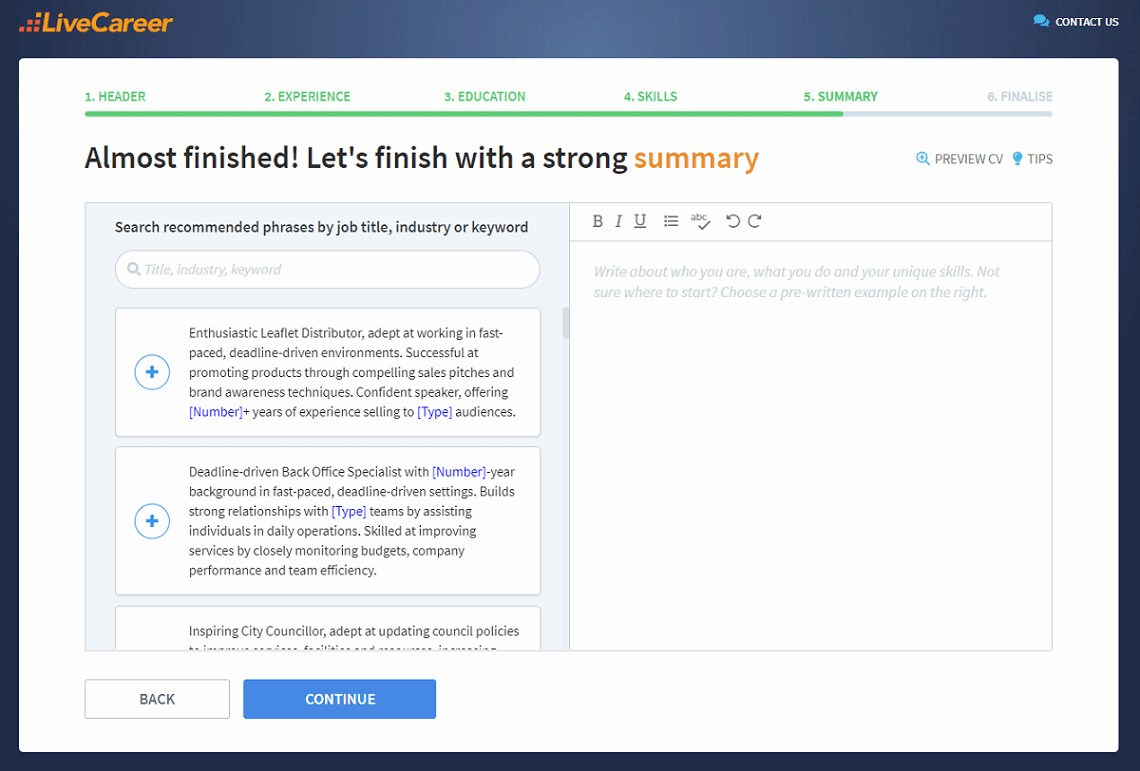
When showcasing your work history, it’s crucial to illustrate how your previous roles align with the responsibilities of a physiatrist. The work experience section of your CV should reflect your knowledge of best practice guidelines, capabilities in patient care, rehabilitation, and multidisciplinary team collaboration. Highlight 3–5 bullet points that underline your effectiveness in these areas, along with a noteworthy achievement that stands out. Begin each bullet point with a dynamic action verb to add impact.
Even if your background does not include direct experience as a physiatrist, relevant skills and responsibilities from other roles can be highlighted. Consider utilising a skills-based CV format to prioritise your transferable skills and qualifications.
We’ve prepared a list of exemplary professional achievements for a physiatrist CV to inspire you:
Professional duties & achievements for a physiatrist CV—examples
Begin the education section by listing your most advanced qualification first, followed by others in descending order of importance. If you’re new to the field, populate the education section of your CV with relevant coursework and academic achievements to showcase your skills. Consider visiting our guide on showing degrees on a CV, and explore extracurricular activities that can further improve the impact of your application.
There’s a good and a bad way to present skills on a physiatrist CV, just like there’s a right and wrong way to assess the needs of a patient. The bad way consists of listing one random skill after another with no thought or explanation. The good way involves tailoring the list to the job posting and adding descriptions that show your professional attitude.
Job competencies of a physiatrist include a combination of soft skills and hard skills, such as patient care, communication, time management, attention to detail, physical assessment, creating treatment plans, and so on. Analyse the job advertisement to make sure you’ve listed all the skills required for the job you want.
Additional CV sections aren’t just to fill the empty space, so use them wisely. They can serve as opportunities to demonstrate your qualifications for the role.
Your choice isn’t limited to professional certificates or licences. For instance, proficiency in foreign languages can be invaluable for physiatry professionals working in diverse communities. Furthermore, industry knowledge shown through the hobbies and interests section can add depth to your physiatrist CV, making it more appealing.
Crafting a comprehensive job application involves more than just a CV; a cover letter that elaborates on your CV is equally essential.Tailor your cover letter by conveying your sincere enthusiasm for improving the lives of patients. Begin with a compelling introduction, outline your main professional qualifications and strengths, and end the letter by illustrating how your skills can be advantageous to the organisation. Suggest the possibility of a meeting or a call and conclude with a professional sign-off.
You don’t have to be a CV writing expert. In the LiveCareer CV builder you’ll find ready-made content for every industry and position, which you can then add with a single click.
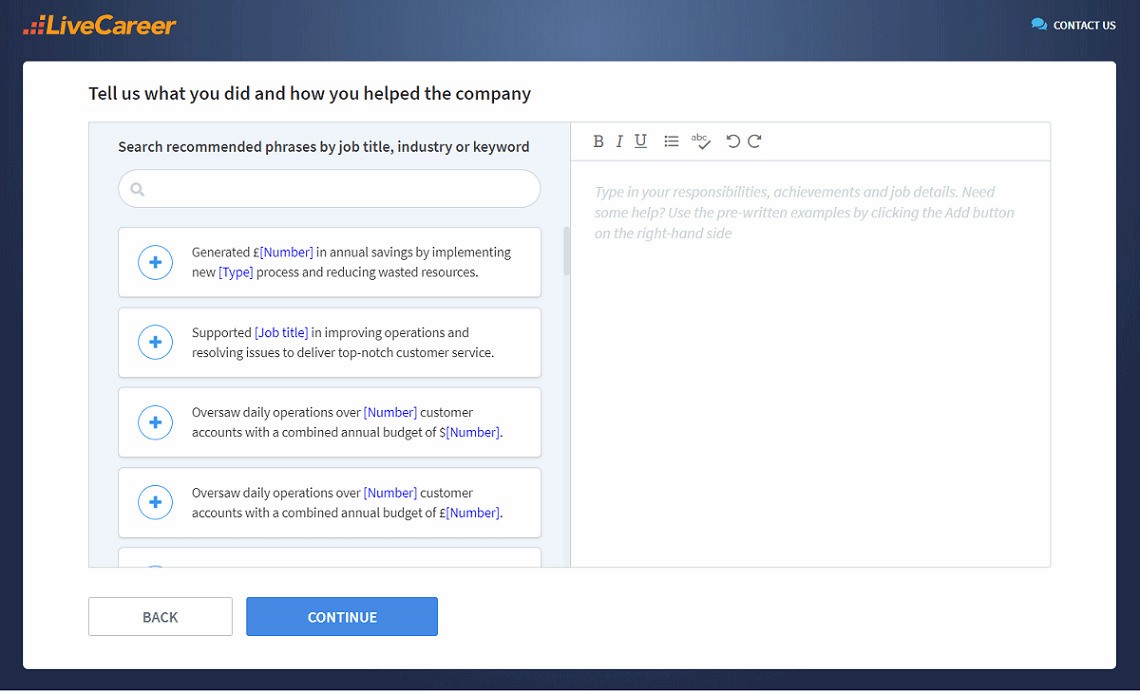
Applying for other jobs? Try these CV examples as well:
Creating an outstanding physiatrist CV is just the first step towards a rewarding career. Thank you for taking the time to read this guide. If you have any questions or need further assistance, please leave a comment below.
Our editorial team has reviewed this article for compliance with Livecareer’s editorial guidelines. It’s to ensure that our expert advice and recommendations are consistent across all our career guides and align with current CV and cover letter writing standards and trends. We’re trusted by over 10 million job seekers, supporting them on their way to finding their dream job. Each article is preceded by research and scrutiny to ensure our content responds to current market trends and demand.
About the author
Since 2013, the LiveCareer UK team has shared the best advice to help you advance your career. Experts from our UK editorial team have written more than one hundred guides on how to write the perfect CV or cover letter.
Rate this article:
Physiatrist cv
Average:
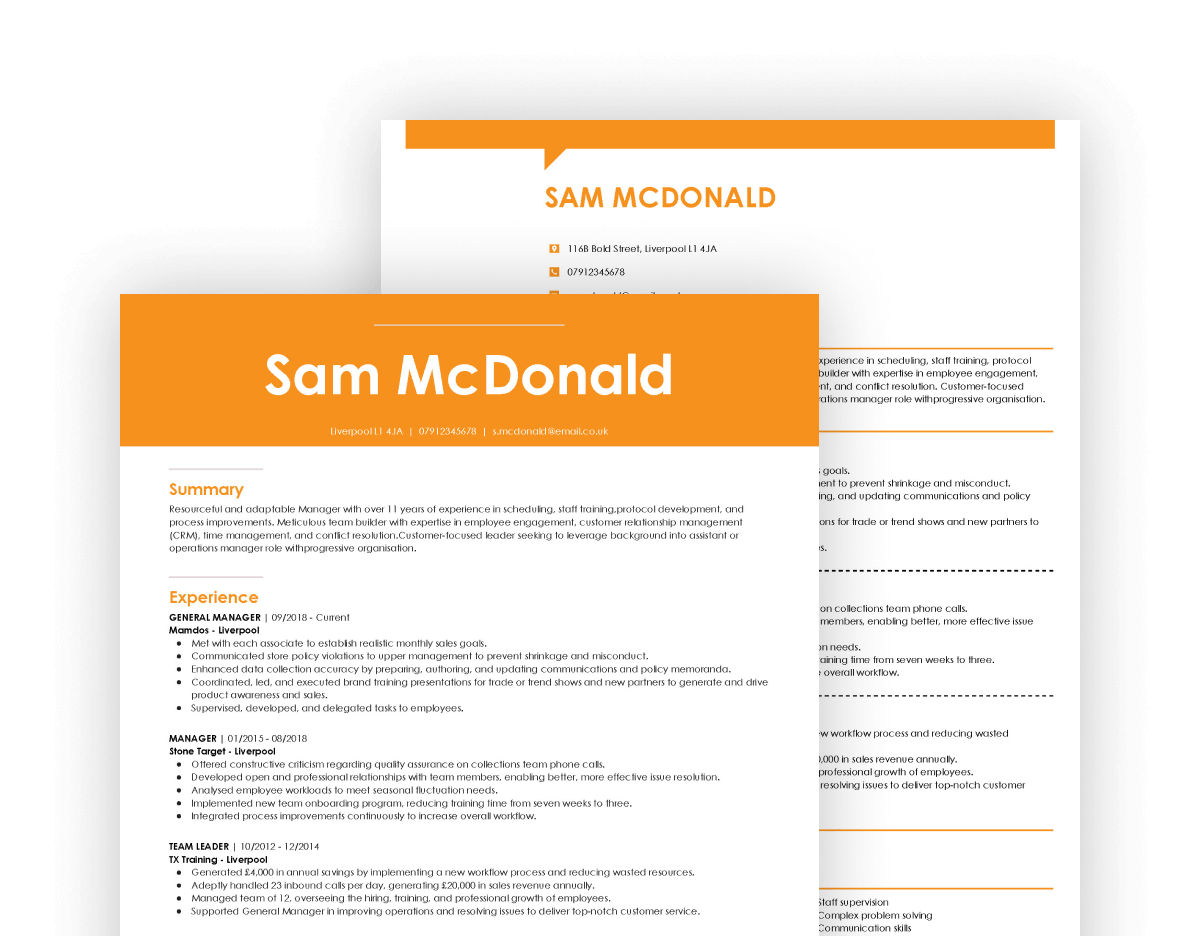

Keep track of your career's vitals and learn how to make a nurse CV that will impress any matron. See nursing CV examples and forge your career path.

See an inspiring optometrist CV example and read expert advice to create a personalised optometry CV and advance your career.

This mental health nurse CV example will inspire you to apply for jobs that interest you. Our tips will help you write a professional mental health nurse CV.
Our customers were hired by: